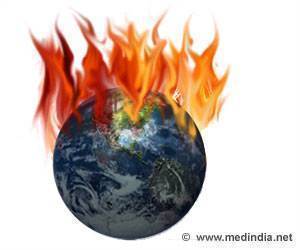More evidence to show that the globe is indeed warming. A review of scientific literature released by James Cook University (JCU), Australia shows that the Earth’s tropical zone is expanding and with it the subtropical dry zone is extending into what have been humid temperate climate zones.
The authors of the review concluded that the effects of a poleward expansion of the tropical and subtropical zones were immense, resulting in a variety of social, political, economic and environmental implications.Conducted by Dr Joanne Isaac, Post-Doctoral Fellow at JCU’s Centre for Tropical Biodiversity and Climate Change, with Professor Steve Turton, from JCU’s School of Earth and Environment Sciences, the review looked at scientific findings from long-term satellite measurements, weather balloon data, climate models and sea surface temperature studies.
Professor Turton said that the review - Expansion of the Tropics: Evidence and Implications - encompassed about 70 peer-reviewed scientific papers and reports from scientists and institutions right around the world.
The review found that of particular concern were regions which border the subtropics and currently experience a temperate Mediterranean climate.
“Such areas include heavily populated regions of southern Australia, southern Africa, the southern Europe-Mediterranean-Middle East region, the south-western United States, northern Mexico, and southern South America – all of which are predicted to experience severe drying.
“If the dry subtropics expand into these regions, the consequences could be devastating for water resources, natural ecosystems and agriculture, with potentially cascading environmental, social and health implications.”
Advertisement
“A further implication of the expansion of the tropical zone is the possible expansion of tropical associated diseases and pests.”
Advertisement
The tropical zone is commonly defined geometrically as the portion of the Earth’s surface that lies between the Tropics of Cancer and Capricorn at 23.5 degrees latitude north and south respectively.
“In general, atmospheric scientists estimate the climatic boundaries of the tropics extend further from the equator to around 30 degrees latitude north and south,” the review reports.
“In recent years a variety of independent studies, employing different methodologies have found evidence for the widening of the topical region, as defined by climate scientists.
“However, while evidence is accumulating for the widening of the tropical belt and shifts in other climatic events, there is still much uncertainty regarding the degree of the expansion and the mechanisms which are driving it.
“For example, across the studies reviewed the estimates of the increase in the tropics vary from 2.0 to more than 5 degrees of latitude approximately every 25 years. That makes the minimum agreed expansion of the Topics zone equivalent to around 300 kilometres.
“This variation of estimates makes predicting future shifts difficult. Estimates for the expansion of the tropical zone in next 25 years (assuming the rate of movement is the same as the past 25 years) range from approximately 222 kilometres to more than 533 kilometres depending on which estimate is used.”
The tropics currently occupy approximately 40 per cent of the Earth’s land surface and are home to almost half of the world’s human population and account for more than 80 per cent of the Earth’s biodiversity.
The majority of the world’s endemic animals and plants, which are found nowhere else on earth, are found in the tropics and are adapted to the specific climatic conditions found there.
“Thus, the implications of a poleward expansion of the tropical and subtropical zones are immense and the effects could result in a variety of social, political, economic and environmental implications,” the review said.
The Vice Chancellor of James Cook University, Professor Sandra Harding, said that the review showed that with the expansion of the tropical zone and the subsequent push towards the poles of the subtropical arid zone, there was an urgent need for more research into the problems and issues encountered in the tropics.
Source-Medindia
GPL








